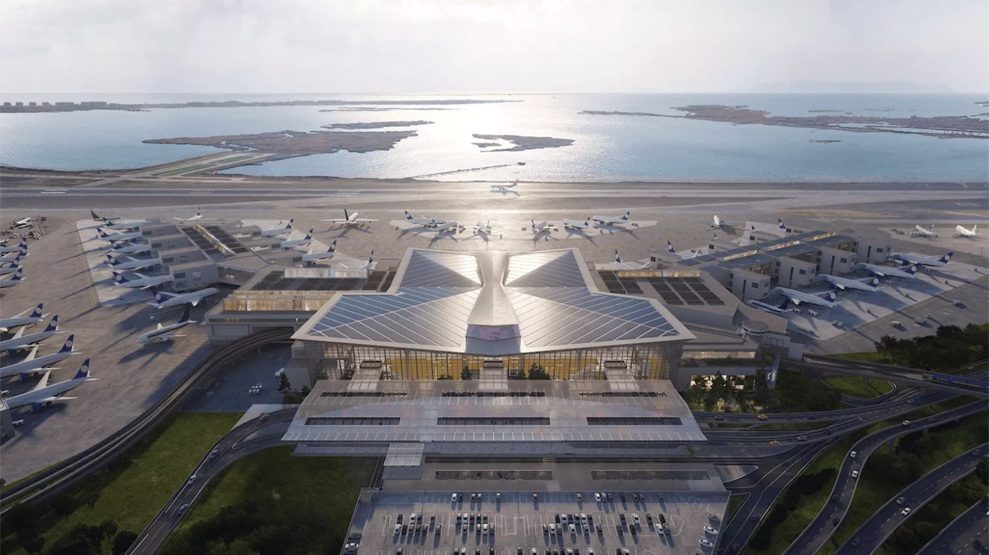
A rendering of the new Terminal One at John F Kennedy International Airportalphastrixr
Fight Disinformation: Sign up for free Mother Jones Deli Newsletter and follow the news that matters.
The United States is on the verge of its most consequential change since the New Deal. Read more about what it takes to decarbonize an economy, and what gets in the way, here. Leer este articulo en español.
Tookplanes of In the image above, the microgrids are ready to fly. If you’ve never heard of them, you will soon. “A microgrid,” as journalist Lois Parsley tells us in her accompanying story electrify everything package,” is basically a relatively small, local system that can generate, store and/or distribute electricity, and operate off the main grid when needed. They can be public or private. There are, and some can include anything from sharing solar panels with neighbors to a bitcoin mine powered by your own wind farm.
The viability of clean energy microgrids has long been thwarted by regulations and monopoly utilities acting in their own self-interest. But in recent years, falling costs and the easing of restrictions by some states have enabled the installation of hundreds of new microgrids—projects that provide energy flexibility to small communities and make the main power grid less prone to costly failures. View snapshots of the four projects at various stages of completion:
Most recently the city leader in San Jose, California green flag An ambitious proposal by Google to create an 80-acre downtown development with more than 7 million square feet of office space for 25,000 employees and more than a half million for stores, restaurants, arts venues and nonprofits. There are also 4,000 new housing units for low-income families – a quarter set aside. project, which will pull with almost all its power a large microgrid of distributed photovoltaics and battery storage, is designed to discourage driving and also “prioritises liveable and healthy places to improve collective social, physical and mental well-being.”
Last year, the Department of Energy Navajo Nation Granted $1.1 million for water pumps, high-speed internet, and a microgrid—solar farms, battery storage, and a propane generator for emergencies—to power 24 homes in the country’s Kayenta chapter. It’s one of several renewable projects underway in Navajo territory, where about one-third of homes lack electricity, and then-tribal president Jonathan Nez explained that the landscape and the southwestern climate made it “the best way to provide that type of energy.” a prime location for ,
Grid failures wreak havoc on air travel, so JFK International’s new $9.5 billion Terminal One, now under construction, will host New York City Largest rooftop solar array, paired with battery storage and backup fuel cells whose waste heat can be used to heat and cool water. When completed in 2030, proponents say, it will be the first transit hub in the region capable of operating completely off-grid and “maintaining 100 percent airport operation during power outages.”
For years, the 510 or so residents of Hot Springs, North Carolina, Reliance On a single, 10-mile utility transmission line for their electricity, going down that line left them as far as Cosmic Creek. But in February, Duke Energy fired up A new solar-and-battery microgrid “that could power an entire small town if its main power line experiences an outage.” Bonus: The project reduces “the need for equipment upgrades in an environmentally sensitive area.”




